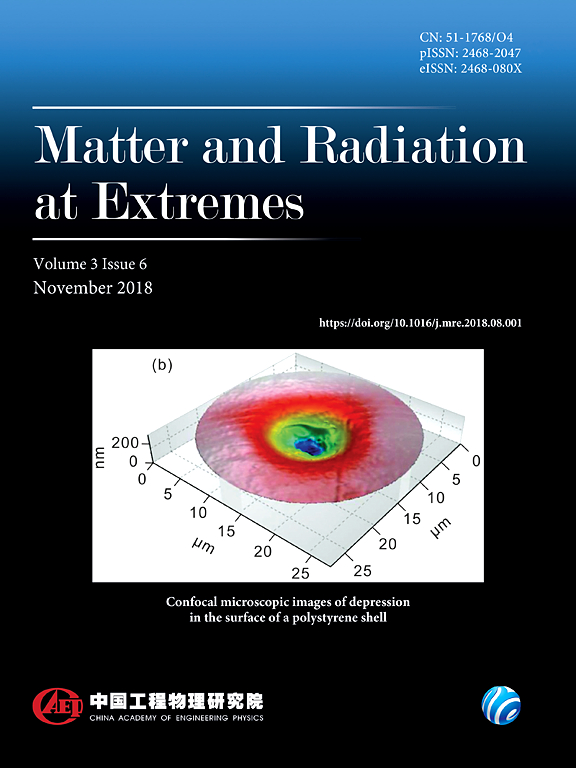利用激光生产放射性同位素:从基础科学到应用
IF 4.7
1区 物理与天体物理
Q1 PHYSICS, MULTIDISCIPLINARY
引用次数: 0
摘要
啁啾脉冲放大技术的发现极大地改进了激光技术,使高能激光束能够被压缩到几十飞秒的脉冲持续时间,并聚焦到几微米的范围内。能量为几十兆电子伏特的质子可以利用目标法向鞘加速等方式进行加速,并聚焦到次级目标上。在这种条件下,可以发生核反应,产生适合医疗应用的放射性同位素。使用高重复激光器生产此类同位素,与主要基于加速器的传统方法相比,具有很强的竞争力。在本文中,我们研究了 67Cu、63Zn、18F 和 11C 的生产,这些同位素目前用于正电子发射断层扫描和其他应用。同时,我们还研究了 10B(p,α)7Be、70Zn(p,4n)67Ga 反应,以进一步限制不同角度的质子分布,以及与能量产生相关的 11B(p,α)8Be 反应。该实验在西班牙萨拉曼卡 Vega III 的 1 PW 激光设备上进行。使用高纯锗探测器测量了放射性同位素在正向(相对于激光方向)和反向的角度分布。我们的结果与根据 Kimura 和 Bonasera [Nucl.本文章由计算机程序翻译,如有差异,请以英文原文为准。
Radioisotope production using lasers: From basic science to applications
The discovery of chirped pulse amplification has led to great improvements in laser technology, enabling energetic laser beams to be compressed to pulse durations of tens of femtoseconds and focused to a few micrometers. Protons with energies of tens of MeV can be accelerated using, for instance, target normal sheath acceleration and focused on secondary targets. Under such conditions, nuclear reactions can occur, with the production of radioisotopes suitable for medical application. The use of high-repetition lasers to produce such isotopes is competitive with conventional methods mostly based on accelerators. In this paper, we study the production of 67Cu, 63Zn, 18F, and 11C, which are currently used in positron emission tomography and other applications. At the same time, we study the reactions 10B(p,α)7Be and 70Zn(p,4n)67Ga to put further constraints on the proton distributions at different angles, as well as the reaction 11B(p,α)8Be relevant for energy production. The experiment was performed at the 1 PW laser facility at Vega III in Salamanca, Spain. Angular distributions of radioisotopes in the forward (with respect to the laser direction) and backward directions were measured using a high purity germanium detector. Our results are in reasonable agreement with numerical estimates obtained following the approach of Kimura and Bonasera [Nucl. Instrum. Methods Phys. Res., Sect. A 637, 164–170 (2011)].
求助全文
通过发布文献求助,成功后即可免费获取论文全文。
去求助
来源期刊

Matter and Radiation at Extremes
Physics and Astronomy-Atomic and Molecular Physics, and Optics
CiteScore
8.60
自引率
9.80%
发文量
160
审稿时长
15 weeks
期刊介绍:
Matter and Radiation at Extremes (MRE), is committed to the publication of original and impactful research and review papers that address extreme states of matter and radiation, and the associated science and technology that are employed to produce and diagnose these conditions in the laboratory. Drivers, targets and diagnostics are included along with related numerical simulation and computational methods. It aims to provide a peer-reviewed platform for the international physics community and promote worldwide dissemination of the latest and impactful research in related fields.
 求助内容:
求助内容: 应助结果提醒方式:
应助结果提醒方式:


